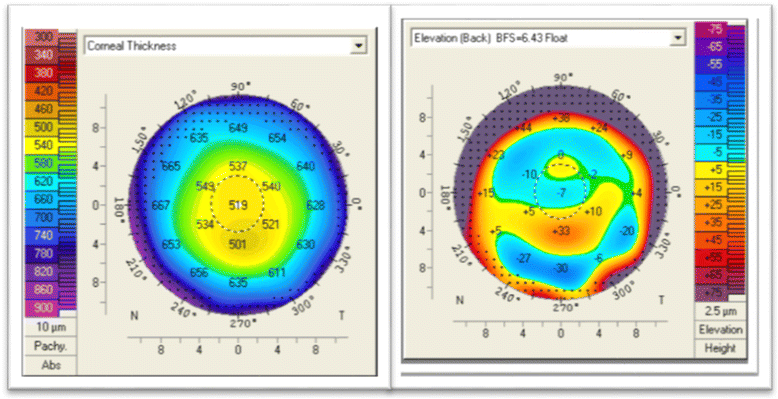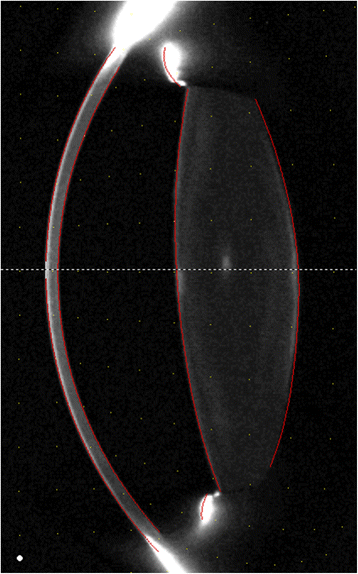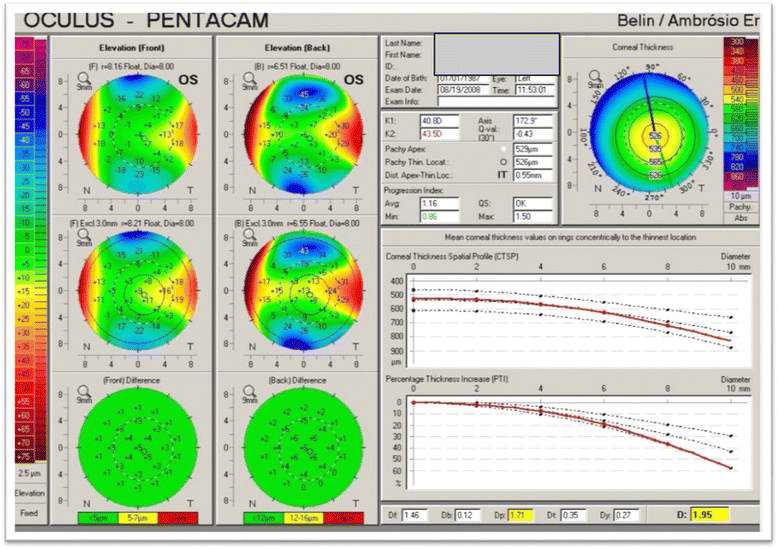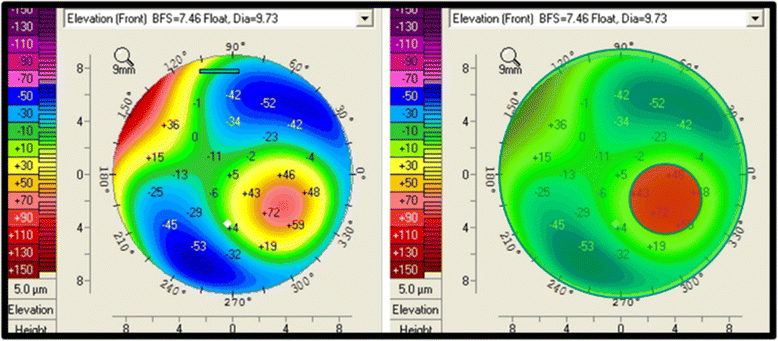Assessing progression of keratoconus: novel tomographic determinants
- PMID: 26973847
- PMCID: PMC4787036
- DOI: 10.1186/s40662-016-0038-6
Assessing progression of keratoconus: novel tomographic determinants
Abstract
Several methods have been described in the literature to both evaluate and document progression in keratoconus, but there is no consistent or clear definition of ectasia progression. The authors describe how modern corneal tomography, including both anterior and posterior elevation and pachymetric data can be used to screen for ectatic progression, and how software programs such as the Enhanced Reference Surface and the Belin-Ambrosio Enhanced Ectasia Display (BAD) can be employed to detect earlier changes. Additionally, in order to describe specific quantitative values that can be used as progression determinants, the normal noise measurement of the three parameters (corneal thickness at the thinnest point, anterior and posterior radius of curvature (ARC, PRC) taken from the 3.0 mm optical zone centered on the thinnest point), was assessed. These values were obtained by imaging five normal patients using three different technicians on three separate days. The 95 % and 80 % one-sided confidence intervals for all three parameters were surprisingly small (7.88/4.03 μm for corneal thickness, 0.024/0.012 mm for ARC, and 0.083/0.042 mm for PRC), suggesting that they may perform well as progression determinants.
Keywords: Amsler-Krumeich; Collagen cross-linking; Ectatic disease; Keratoconus; Progression; Scheimpflug; Tomography.
Figures







References
-
- Nottingham J. Practical Observations on Conical Cornea: and on the Short Sight, and Other Defects of Vision Connected with it. London: J Churchill; 1854.
-
- Gorskova EN, Sevost’ianov EN. Epidemiology of keratoconus in the Urals. Vestn Oftalmol. 1998;114:38–40. - PubMed
Publication types
LinkOut - more resources
Full Text Sources
Other Literature Sources
Research Materials

